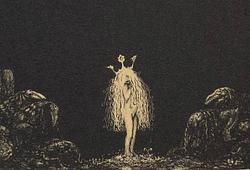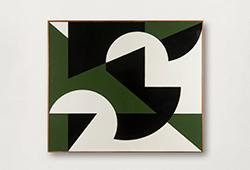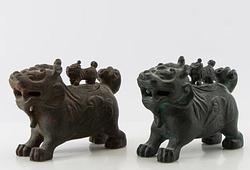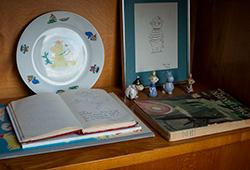Alvar Aalto
ALVAR AALTO, A '9751' vase Karhula Glassworks 1937.
Yellow glass, blown into a wooden mould. Height 14 cm.
Wear due to age and use. Damages.
More information
Architect Alvar Aalto found his way into glass design in the 1930s by participating in several design competitions in the field. Perhaps the most important victory can be the art glass competition announced by the Karhula glassworks factory in 1936, which resulted in one of Finland's best-known and most beloved vases.
In 1936, Alvar Aalto had been chosen to design the Finnish Pavilion in Paris for the following year's World's Fair. Shortly afterwards, the Karhula glassworks factory organized a design competition with a focus on glass objects. These objects were to be exhibited in Paris and Aalto won the design competition yet again. His work presented in the competition was called ‘Eskimoerindens skinnbuxa’. Aalto had sketched several different vases with curved lines and some of which were seen at the Paris World's Fair. Some of the models ended up as part of the decoration in the restaurant, Savoy in Helsinki, Finland, where additionally Alvar and Aino Aalto designed the interior around the same time. One of their most eminent vases is now named the Savoy vase or the Aalto vase.
In the pre-war years, only small quantities of the various vase models that originated from the competition were manufactured. The curving lines and asymmetrical shapes, typical for Aalto were judged to be too bold and experimental and did not appeal to the general public. The design also posed technical manufacturing challenges - they were originally manufactured by using a wood mold until the 1950s. Using this technique, consequently made the surface uneven and lively. This simultaneously limited the quantity of production.
Post-wars, the production of Aalto vases gradually resumed, and in the following decades, due to the changes in manufacturing techniques, vases could be produced in much larger quantities. During the same time, the model 9750 begun to gain interest (later the Iittala model 3030), which later took its place as the commonly familiar Savoy vase.
One of the vases that originated from the Karhula design competition is the vase model 9751, which additionally was a part of the interior of the restaurant Savoy, and is now known as the smaller Savoy vase. Only twenty pieces of this very rare model were made between 1937 and 1939, and to this day only a few vases have reportedly been recovered. This vase model has not been preserved in the restaurant Savoy either, but it can be experienced in the old photographs taken in the restaurant. In addition to its smaller size, the model 9751 was more rectangular and narrower than the currently known Savoy vase, and thus also more unstable. This may explain its omission from production as well as the survival of only a few pieces to this day. The golden hue of the model is unique for this vase and have not been used in other vases designed by Aalto.
Designer
Alvar Aalto is one of Finland's most prominent architects and designers and one of Scandinavia's biggest proponents of modern architecture and design. Several of the furniture and vases he designed are today considered iconic design classics, including the Savoy vases, the Beehive lamp, and Armchair, model '31'.Alvar Aalto is the most internationally famous Finnish architect and designer. Aalto was a great ambassador for Finnish design at a time when the Finnish people were thinking about how to present themselves to the rest of the world. He gave equal weight to form and function, and was inspired by the Finnish landscape. Aalto is one of the most important representatives of modern architecture and has created its own architecture direction, whose aesthetic effect is based on careful planning of the buildings in relation to the environment, a human dimension and good sense of material.
Read more






















































